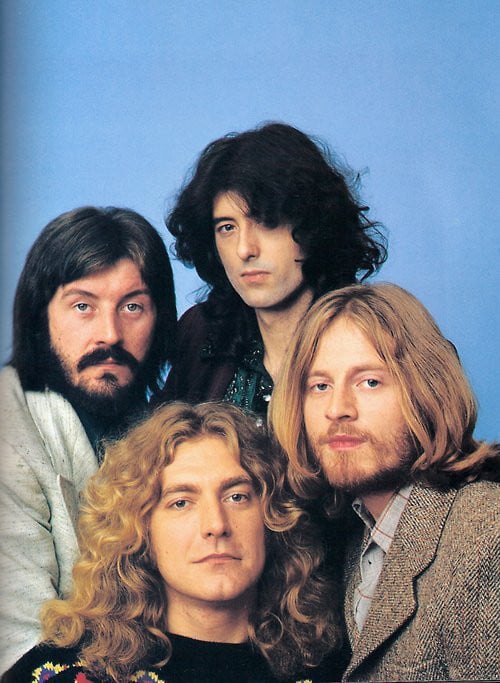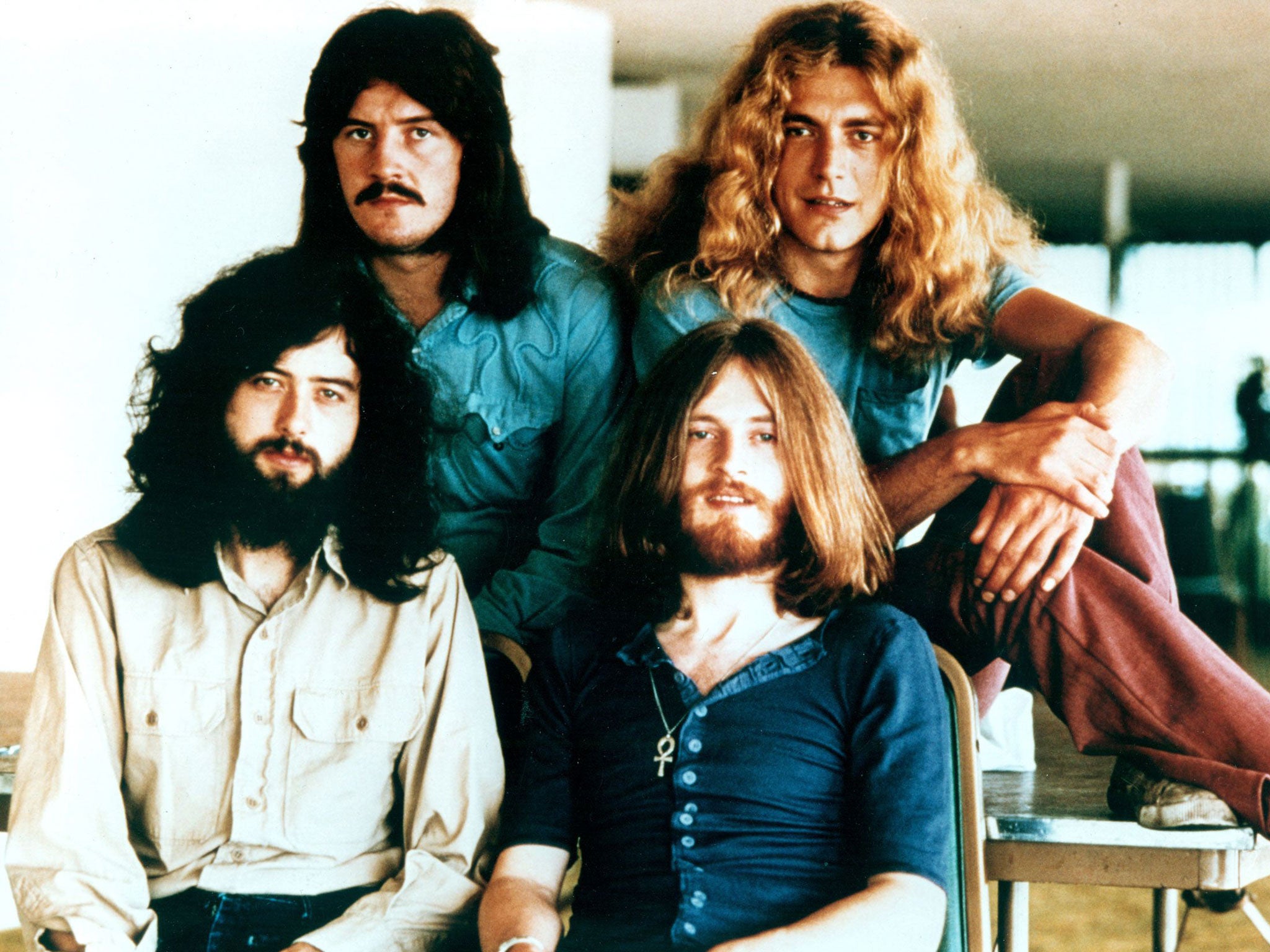The Curse of Led Zeppelin: Magic, Mystery, and Tragedy Behind Rock’s Greatest Band
Jimmy Page, the erudite and softly spoken lead guitarist of Led Zeppelin, once admitted to a journalist: “I do not worship the Devil, but magic does intrigue me, magic of all kinds. It wasn’t for some years until I understood what it was all about.” Born in Hounslow, West London, Page shook the rock world unlike any other star before him. Broodingly handsome, witty, and with an eccentric taste, he was a peacock among pheasants.
His social circle epitomized the Age of Aquarius: finger-snapping, hash-smoking, LSD-dropping dandies. Yet beneath the playful counterculture veneer lay a darker fascination—mystical eastern esotericism and ancient magic: the occult. Page’s fascination with this arcane world connected him to rock legends like Eric Clapton and The Rolling Stones, for whom he played as a session guitarist before forming Led Zeppelin, an experimental evolution of his former band, The New Yardbirds.

In Page’s words, Led Zeppelin “came together like magic.” John Paul Jones on bass, Robert Plant on vocals, and John Bonham on drums formed what seemed an unholy quaternity, symbolized by four personal sigils. Outside occult circles, a sigil is a symbol used in magic, often to channel or represent spiritual forces. Today, they are frequently employed in Chaos Magic, capable of both blessings and curses.
Speculation holds that Page’s dabbling in the occult had profound consequences. Misfortune, accidents, illness, and early deaths haunted the band and those close to them—a phenomenon now called the Curse of Led Zeppelin. Some believe that Page sold his soul, and by extension, those of Plant and Bonham, to the Devil.
To understand this curse fully, we must rewind nearly six centuries to Johann Georg Faust, the alchemist whose legendary pact with the Devil inspired countless tales. Faust, dissatisfied with human knowledge, summoned Mephistopheles and traded his soul for boundless wisdom and pleasure—a Faustian bargain. His story ended tragically in a laboratory explosion, the supposed price of the deal.

Music and the supernatural have long been entwined. The Bible describes Lucifer as Heaven’s finest musician, and deals with the Devil are a recurring motif in musical lore. In 1713, Italian composer Giuseppe Tartini dreamed the Devil played his violin, inspiring the technically formidable “Devil’s Trill Sonata.” Similarly, Robert Johnson, a Mississippi bluesman who influenced Led Zeppelin, allegedly sold his soul at a crossroads, receiving unparalleled musical skill in return. Some scholars suggest Johnson’s encounter may have been rooted in African Vodou, where the guardian of the crossroads, Papa Legba, serves as a trickster and spiritual guide rather than a malevolent force.
Led Zeppelin drew heavily from this blues tradition. Songs like “The Lemon Song”, “Trampled Under Foot”, and their 1969 cover of “Travelling Riverside Blues” reflect the deep imprint of Johnson and other bluesmen. As rock ’n’ roll rose in England, young musicians, including Page, embraced not only the music but also the supernatural fascination that came with it, seeking to transcend conventional society.
Among Page’s influences was the controversial occultist Aleister Crowley. Though often mischaracterized as a Satanist, Crowley was a magician, not an illusionist, exploring angelic and demonic communication. Crowley’s credo, “Do What Thou Wilt”, symbolized freedom from societal constraint and self-gratification, resonating with the 1960s counterculture. Page’s fascination became obsessive: he joined Crowley’s Ordo Templi Orientis, studied Egyptian-inspired magic, and purchased Crowley’s former home, Boleskine House, on Loch Ness.

Boleskine House had a notorious history: Crowley’s rituals allegedly led to the deaths of children and servants, and later owners reported hauntings, madness, and mysterious fires. Page himself sold the house in 1992, citing its negative energy. His interest extended further—he acquired an esoteric bookstore, the Tower House, and Crowley memorabilia, and his stage outfits, including the infamous dragon suit, were designed as magical robes.
Occult symbolism also permeated Led Zeppelin albums. On Led Zeppelin III, inscriptions like “Do What Thou Wilt” and “So Mote It Be” echoed Crowley and Freemasonry, while Led Zeppelin IV featured tarot-inspired artwork and four personal sigils. Page’s symbol, Zoso, remains enigmatic, and even bandmate Robert Plant could not recall its meaning after Page briefly revealed it.
Tragedy seemed to follow the band. Collaborator Sandy Denny fell into mental illness and died after a fall in 1978. The filmmaker Kenneth Anger, after conflicts with Page over the Lucifer Rising soundtrack, allegedly placed a curse on the band. Soon after, Plant survived a near-fatal car accident, his son Karac tragically died, and Bonham’s alcoholism spiraled, culminating in his death in 1980. Led Zeppelin disbanded, unable to replace their friend and drummer.
The Curse of Led Zeppelin remains compelling, raising questions about the intersection of music, magic, and fate. Jimmy Page survived physically, yet his later musical output never reached the heights of Led Zeppelin’s glory—perhaps a subtler form of the curse. Whether the supernatural truly influenced their destiny, or whether it is merely myth intertwined with tragic coincidences, the legend endures.
As Kenneth Anger once claimed, “They had so many servants yet they would never offer me a cup of tea… I put the curse of King Midas on them. He can’t write songs anymore.” The story of Led Zeppelin reminds us that rock ’n’ roll, magic, and mortality are often inseparably entwined, leaving a legacy as mysterious as it is unforgettable.